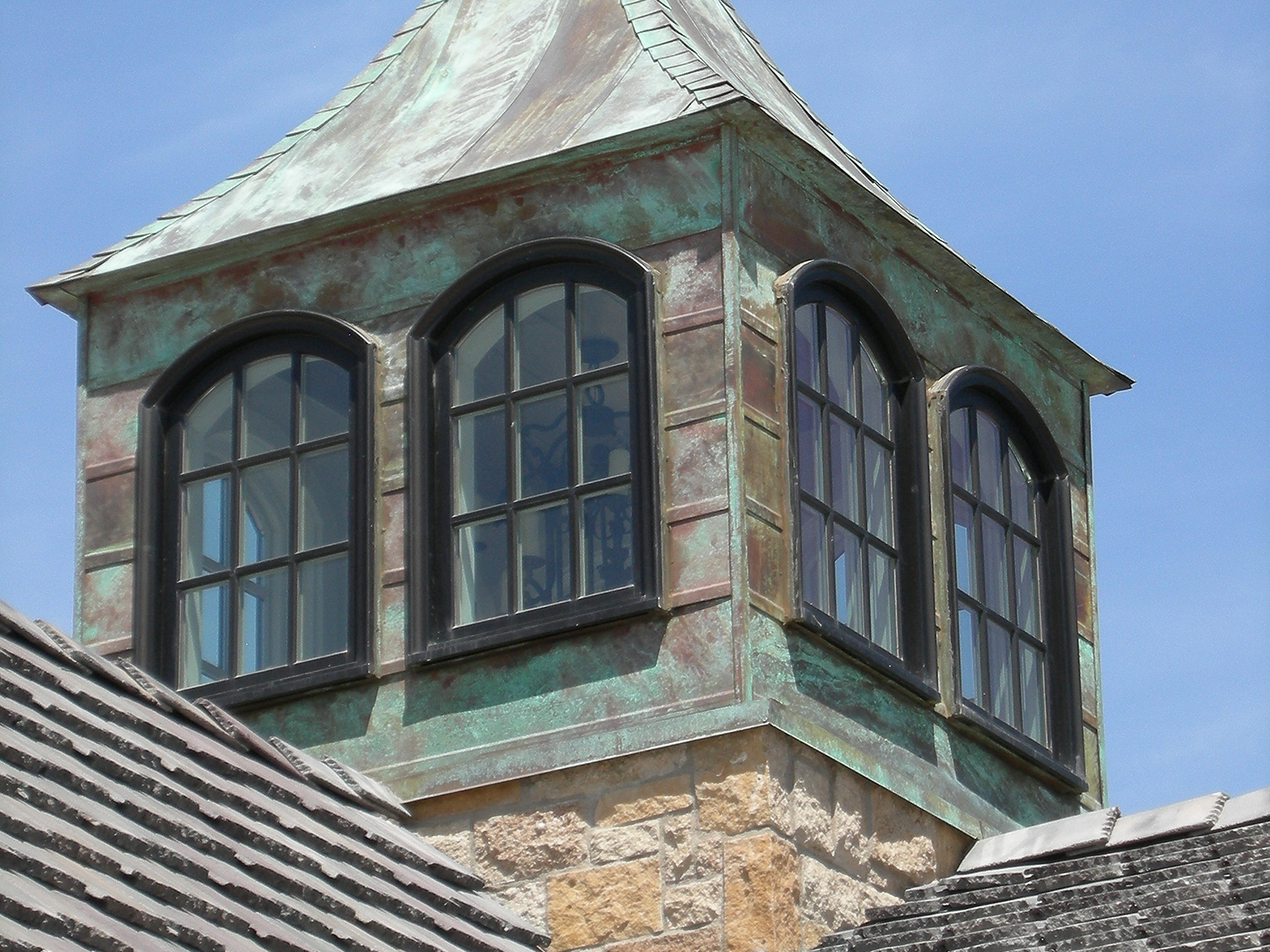
The action of rainwater essentially depends on rain characteristics and prevailing wind directions and to factors such as building geometry, orientations and inclinations of roofs and facades, rain sheltered surfaces etc. It is only via the action of rain water flushing the surfaces that any dissolved copper can be released from the copper surface into the environment. These conditions are very different from bulk immersion conditions where no dry period occurs and dissolved copper has limited possibility to re-precipitate.

Firstly, basic copper compounds evolved in copper patinas are chemically very different compared to soluble copper salts, secondly, the basic copper compounds are integrated within the patina, predominantly composed of cuprite, and thirdly, the thin water film conditions combined with repeated dry and wet periods that govern atmospheric exposure conditions enable partially dissolved copper released from patina constituents to re-precipitate during drying cycles. This assumption is highly erroneous for several reasons. You may believe that a green patina, which is partially composed of basic copper sulfates and/or basic copper chlorides, dissolves as rapidly as a water soluble salt of copper sulfate or copper chloride. Patinas aged during centuries possess hence still high barrier properties due to its patina constituents and most of the underlying copper metal is still non-oxidized, a scenario that would not occur in the presence of of easily soluble corrosion products such as copper salts. This partial dissolution of copper from corrosion products within the patina that may be dispersed into the environment via the action of rainwater is however a very slow process and of marginal importance for the adherent patina. Also the diffuse dispersion of copper from outdoor constructions is relatively independent of patina composition and color.

The gradually developed patina, independent of color and composition, is strongly adherent to the surface and acts as an efficient barrier that significantly reduces the corrosion rate of the underlying copper metal. This is related to the fact that no, or low amounts of predominantly basic copper compounds are formed and integrated with the brown-black patina. In non-marine and low polluted environments, or when the copper metal is freshly exposed, the patina turns brownish in color. sulfur dioxide) environments where typically different basic copper sulfates (and other phases) form the green outer patina layer. This is also true for green patina evolved in polluted (e.g. Even though the outer patina layer is greenish in color, the inner layer is predominantly black-brownish and composed of cuprite, Figure 1 (right). In marine environments, deposition of chlorides in sea-salt aerosols results in the formation of basic copper chlorides turning the copper surface green-turquoise.


The evolution of corrosion products within the patina depends on prevailing environmental conditions, in par- ticular concentrations of sulfur dioxide and sodium chloride. The initially formed copper oxide (cuprite) is responsible for a gradually progressively more brown-black surface appearance, whereas different basic copper sulfates and chlorides make the surface greenish, Figure 1 (left). For copper however, outdoor exposures result in the gradual evolution of corrosion products that exhibit different colors. These surfaces hence often maintain their metallic appearance also after several decades of exposure. However, the oxidation of metals or alloys such as tita- nium and stainless steel is not possible to observe by the naked eye at identical exposure conditions. Well-known examples where these processes are clearly visible and evident are red-rust formation on iron or steel constructions, and white rust staining on galvanized steel surfaces. are oxidized and corroded to different extent when exposed to ambient outdoor conditions.


 0 kommentar(er)
0 kommentar(er)
